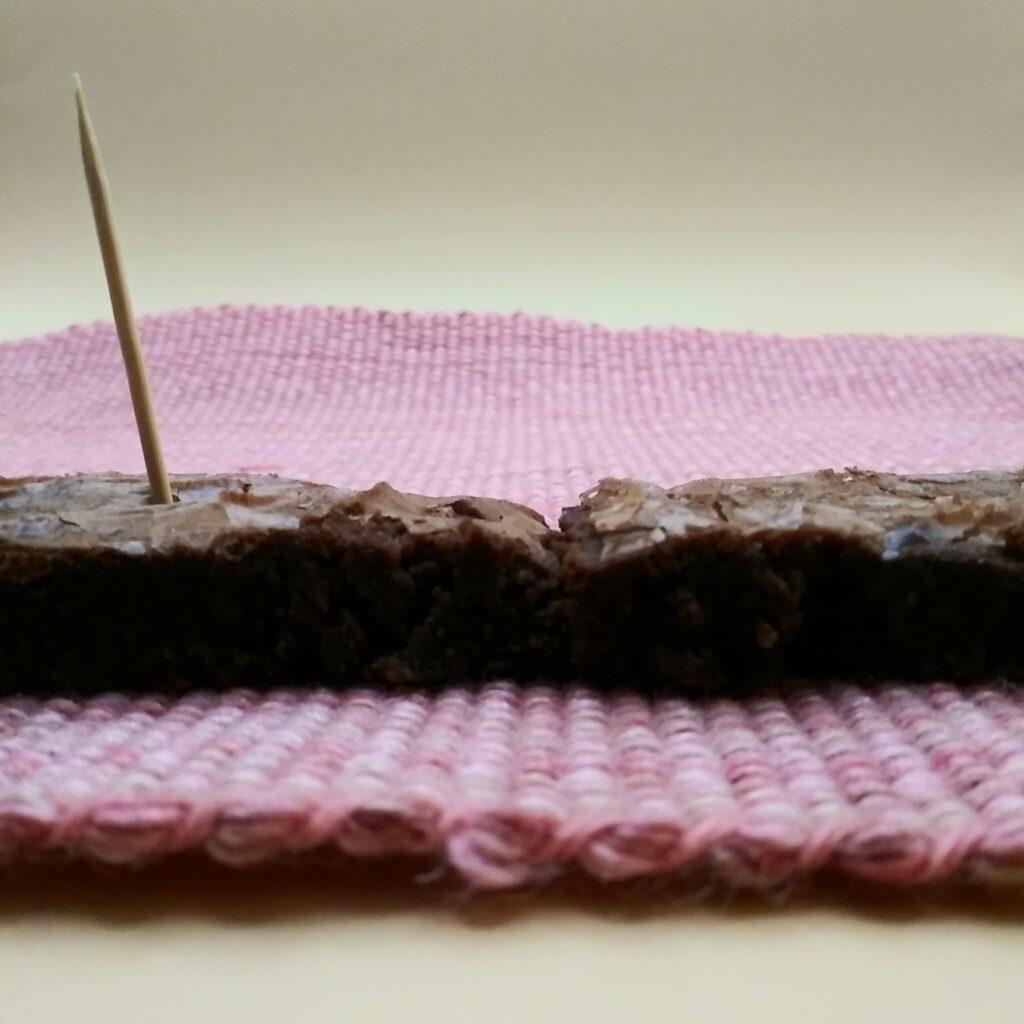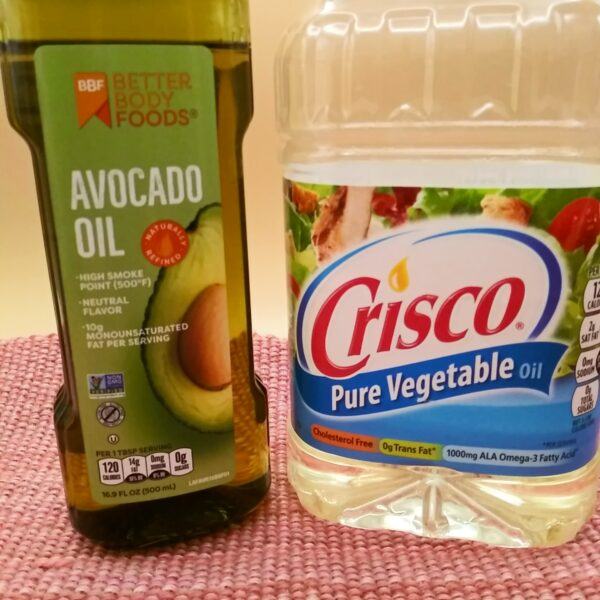Yes, you can use avocado oil in place of vegetable oil in most baking recipes by substituting a 1:1 ratio. With its high smoke point and neutral flavor, avocado oil may seem like a dream ingredient for baking. And in many ways, it is! Whether you’re looking to add a healthy twist to your recipes or to keep cookies from burning in the oven, avocado oil can be substituted for vegetable oil.
To better understand how avocado oil compares to traditional vegetable oil in baking, refer to the table below.
🔥 Avocado Oil vs. Vegetable Oil: A Baking Showdown 🔥 |
||
|---|---|---|
| Feature | Avocado Oil | Vegetable Oil |
| Smoke Point | High 🌡️ | Medium-High 🌡️ |
| Flavor Profile | Neutral to Buttery 🧈 | Neutral 🤐 |
| Health Benefits | Rich in Monounsaturated Fats and Vitamins E & D ❤️ | Varies by Source 🔄 |
| Best Uses in Baking | Cookies, Cakes, Breads 🍪🍰🍞 | All-purpose 🔄 |
| Brought to You by wearebaking.com 🎂 | ||
Can You Really Use Avocado Oil in Baking?
Before you say goodbye to vegetable oil, there are some important considerations. Will using avocado oil change the texture of your baked goods? Do you want to highlight avocado’s subtle, buttery essence? And is it worth the splurge on your budget?
Oils can actually vary quite a bit in their smoke points – the temperature where they start to burn and smoke. For baking, you typically want an oil with a high smoke point that can withstand high heat. Vegetable oil has a neutral flavor, while avocado oil has a more distinct flavor.
The key is understanding how these smoke points and flavors might influence your baked goods. In some recipes, avocado oil could be an easy, healthier substitute, while in others, it might not turn out quite right.
I used to think vegetable oil was the go-to oil in baking. But lately, I’ve been hearing about using avocado oil instead. Can you really just swap one for the other? I decided to find out.
I made some brownies from a box mix. I weighed the dry mix and divided that in half. I put half in one bowl and the other half in another bowl. The directions were 3 tablespoons of water, 2 eggs, and 2/3 cup of vegetable oil.
So in each bowl, I added 1 1/2 tablespoons water, 1 egg, and in one bowl 1/3 cup vegetable oil and in the other bowl, 1/3 cup avocado oil. I baked each one in a square 7 1/2 x 7 1/2 inch foil pan at 325 degrees for 23 minutes. ( I used refined avocado oil, which also has a neutral flavor).


The pan and the brownie with the toothpick are the ones made with avocado oil.
The verdict? They both baked up great; both were nice and fudgy, just how I like my brownies. But honestly, I could not tell the difference in flavor. The only difference was that the ones made with avocado oil were healthier for you 🙂 My husband preferred the brownies made with avocado oil.
Avocado Oil 101
Compared to vegetable oil, avocado oil offers some nice health perks – it’s full of good-for-you monounsaturated fats and antioxidants. While vegetable oil is perfectly fine, avocado oil has higher levels of vitamins E and D and lutein. For the nutrition-conscious baker, that makes it an appealing option!
However, not all avocado oils are created equal. You can find both refined and unrefined varieties, which can differ quite a bit in taste and their smoke points. Refined avocado oil has a more neutral flavor profile closer to vegetable oil. But unrefined packs more of that lush, buttery avocado flavor.
Explore the distinct characteristics of refined and unrefined avocado oil to determine which best suits your baking needs, as detailed in the table below
🍃 Avocado Oil Varieties: Refined vs. Unrefined 🍃 |
||
|---|---|---|
| Variety | Flavor Profile | Smoke Point |
| Refined Avocado Oil | Neutral, similar to Vegetable Oil 🤐 | High 🌡️ (up to 520°F) |
| Unrefined Avocado Oil | Rich, Buttery 🧈 | Moderate 🌡️ (up to 375°F – 400°F) |
| Brought to You by wearebaking.com 🥑 | ||
For baking, refined avocado oil, with its milder flavor and high smoke point, is usually the best choice. But if you want a subtle buttery taste to complement a cake, cookies, or bread, try unrefined avocado oil.
Tips and Tricks
Swapping avocado oil into your favorite baking recipes is doable with a few easy tweaks! For cakes, cookies, and quick breads, you can generally replace vegetable oil cup-for-cup. However, be aware that avocado oil is a bit thicker. So your batter texture and finished crumb might come out just slightly denser or heavier.
For practical advice on incorporating avocado oil into your favorite recipes, consult the substitution guidelines outlined in the following table.
🍰 Substitution Guidelines: Avocado Oil in Baking 🍪 |
|||
|---|---|---|---|
| Baked Good | Substitution Ratio | Leavener Adjustment | Additional Liquid |
| Cakes & Quick Breads | 1:1 🔄 | Increase by 1/4 tsp per cup of oil 📈 | Add 1-2 Tbsp if needed 💧 |
| Cookies | 1:1 🔄 | May not be needed 🚫 | Adjust as per batter/dough consistency 💧 |
| Breads | 1:1 🔄 | May not be needed 🚫 | Adjust if dough is too stiff 💧 |
| Brought to You by wearebaking.com 🎂 | |||
To make up for this, you can increase the amount of leaveners, such as baking powder or baking soda, by 1⁄4 teaspoon per cup of oil used. Consider an extra tablespoon or two of liquid to get the right consistency for things like cake batters. In the beginning, stick with smooth batters rather than thick cookie doughs when baking with avocado oil. The thinner consistency of the batter helps the dense oil mix in evenly without becoming greasy
Taste-wise, refined avocado oil won’t drastically change the flavor of sweet baked goods. But for something like corn bread or biscuits, going for unrefined avocado oil can give a lovely buttery essence that takes it up a notch!
When Avocado Oil Shines (and When It Doesn’t)
As you become comfortable baking with it, avocado oil’s ability to withstand high heat alters recipes for the better. Cookies, biscotti, and nutty baked goods especially shine when baked with avocado oil. Substitute it 1:1 in Snickerdoodle, ginger molasses, or classic chocolate chip cookie recipes. The high smoke point produces crisp edges without burning.
For more delicate baked goods, vegetable oil still reigns supreme, though. The density and thicker texture from avocado oil wouldn’t work as well for ultra-flaky pastries or cakes that need an extra silky crumb. Croissants, pie crusts, and sponge-style treats need that neutral vegetable oil lightness.
,
Is Avocado Oil Worth the Splurge?
I won’t pretend that avocado oil is cheap – it comes with a higher price tag than vegetable oil. It can still be worth investing in some quality avocado oil for your baking needs. Why? For starters, the flavor and fragrance brings something special over a bottle of generic vegetable oil.
Routinely using a costly ingredient isn’t practical for most home bakers. Why not consider avocado oil as an occasional splurge in recipes where its benefits really shine through? Use just a portion of avocado oil blended with other neutral oils when a 100% swap gets too expensive. And stick with vegetable or canola oil when you need an all-purpose option for everyday baking needs around budget.
With so many oil options nowadays, being open to trying avocado oil can open up new possibilities for your baked goods. But you absolutely can achieve tasty results on any budget – just get creative in how you add it!
FAQ Section:
- Q: Can I use avocado oil in all baking recipes?
- A: Not necessarily. If a recipe calls for butter or another specific oil for textural reasons, avocado oil might not be the best substitute.
- Q: Does avocado oil make my baked goods healthier?
- A: While avocado oil offers heart-healthy fats compared to vegetable oil, the overall health impact depends on the recipe and your dietary needs.
- Q: Where can I buy avocado oil?
- A: Most grocery stores and online retailers carry avocado oil. Look for reputable brands and check for quality certifications.
Key Learning Points:
- Yes, you can substitute avocado oil for vegetable oil in most baking recipes with a 1:1 ratio.
- Avocado oil boasts a higher smoke point, making it ideal for high-heat baking.
- Its neutral flavor won’t alter your recipe’s taste, but unrefined options add a subtle buttery note.
- It’s rich in heart-healthy fats, offering potential health benefits compared to vegetable oil.
- Consider the cost and potential impact on texture before making the switch.
Have you tried using avocado oil in any of your favorite baking recipes? Please leave me a comment below.
And As Always
Keep On Baking!
Taianne
Share the Love

I’m Taianne, the owner and operator behind We Are Baking. Baking my first cake at age 11 hooked me on creating sweet treats. Though my interest faded during childhood, it was rekindled when I married my apple pie-loving husband. I love trying new recipes, tweaking classics, and helping others learn the science and art of baking. I started We Are Baking to share tips, tricks, and favorite recipes I’ve discovered over the years. When not in the kitchen, I enjoy spending time with family and friends. My goal is to inspire others to embrace their creativity through baking. Feel free to contact me with any questions!
Taianne@wearebaking.com

